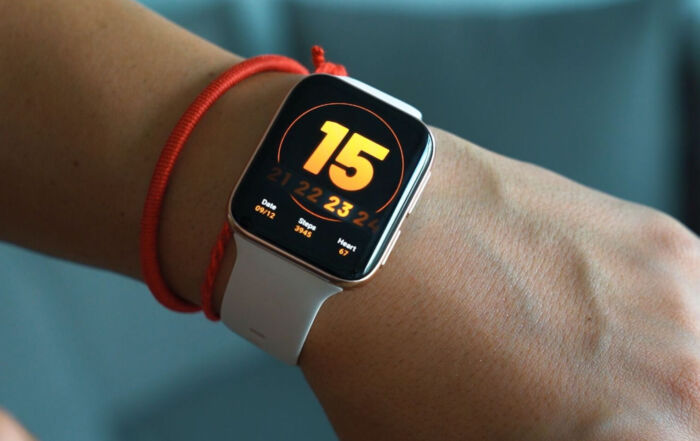This article is the first part of a series called Reflecting on Technologies which hopes to shed some light on how technologies have shaped human interaction. It hopes to encourage meaningful discussions and reflection on the way technologies are implemented and used in the current age. The opinions stated in this article are personal of Celine Röder (Class of Spring 2022) and are not those of the Center for Digital Technology & Management.
***
I was seven years old, it was Christmas and I was struck down with sickness – definitely less than ideal for such an exciting day. Yet, under the Christmas tree, there was a present that managed to energize me when I opened it. As you might have guessed, it was a new Nintendo DS Lite in grey. (Today you would probably call it Space Grey. At least if you are following Apple’s color scheme.)
As one would expect from a device with such a name, there is quite a lot of history behind it. So here it comes – thanks Wikipedia! The initial Nintendo DS model was released in late 2004 and I see it as the first big step towards modern consoles. It had two screens where one was touch – a huge advancement from the previous Gameboy consoles. I also fondly remember the very small fixture where you were to insert the equally very small pencil which was used for the touch screens. Not an easy task – especially when you are a young child who is always losing stuff. Nintendo’s product managers and designers probably thought the same, so they upgraded the old Nintendo DS Lite (and the next Nintendo DSi) to the Nintendo DSi XL in 2009/10. Apparently, that was not enough, so next up was the Nintendo 3DS in 2011 and then a whole while later the Nintendo Switch in 2019. I for my part know it mostly because I see a plethora of parents keeping their children entertained with it when they’re in a restaurant or shopping. But I am not getting into that here, that’s a whole different topic for another time.
Let’s go back to the Nintendo DS Lite I had received for Christmas. Ripping apart the gift wrap and opening the box, it seemed to me that I was holding the holy grail in my hands. At least partly – because the console itself can’t do much without the games.
Do you know which ones I’m talking about? Those small square cards where the front is a glued picture of the game with the back holding all the electronics. They came in a huge plastic box compared to the actual size (3.3cm x 3.8cm x 0.4cm) of the card – with nothing else but the game in it. Well, as you could imagine, seven-year-old girls are not much into Pokémon nor into Zelda or any other kind of fantasy game. Thankfully my parents knew, so I received the epitome of games a young girl could wish for – a game with the unruly name of Nintendogs. Seriously, who thought it would be cool to mix the company name with an animal? Yet, I was instantly in love. Day in and day out, I would take care of my three Labradors Luna, Stella and Lilly. I would walk them along the street in the game, get them washed, brushed, and trained them – they were especially good at catching discs you were throwing at them.
But this is where we are getting serious. Looking back, in my opinion, Nintendos were in the sweet spot of time when electronics were upgraded from analog to first-hand digital solutions. Yet, they were not as advanced as products in the 2010s started to be.
Take the hardware for example. Yes, Nintendos were handy. But as handy as iPhones, even the earliest one? I don’t think so. I distinctly remember that carrying the Nintendo around was not fun. The weight was 218g – almost 50g more than the iPhone 14 weighs nowadays. Quite heavy – especially for children. The touchscreen was nowhere near the accuracy of today, yet it was a significant leap from the previous consoles only operating on buttons. There was also the pain of manually inserting the games and I haven’t even talked in depth about the afore-mentioned pencil that was ALWAYS getting lost.
So why, despite all the difficulties, is the title of this article still “An ode to the Nintendos of our childhood”? Well, here’s the thing. We are looking back and deem many parts of our Nintendos as old, low technology or unhandy. In our everyday life, we have everything we want at one swipe on our smartphones. We don’t have to struggle with mundane things, for example inserting the game, because our phones are solving it for us. Putting in our passwords when downloading an app isn’t necessary anymore. Even the double-click on the side of the iPhone to download something with Facetime seems annoying – at least it does for me from time to time. In short: using a smartphone is oftentimes a frenzy.
And this is exactly why it is so refreshing to get out my old Nintendo. It makes me focus on the present. The small switch on the side and having to hold it one direction to turn it on requires significantly more coordination than using the big button on smartphones. By the way, the coordination needed to operate intense games on the Nintendo with its small buttons on the right, left and in the back is no easy fate either. And the games weren’t even closely as elaborate as today – plainly: some were just repetitive, (I’m looking at you Mario Bros.), but we loved engaging in them. While the ease of usability is undeniably lower than many devices we use today, that is what makes Nintendos so perfect. You must put actual work into using it, something we seem to have forgotten nowadays. This encourages mindfulness and absorbing more of our sensory impressions.
So next time you happen to catch yourself scrolling mindlessly through your phone, get out your old Nintendo and try immersing yourself in a virtual reality that’s closely tied to your present moment.







